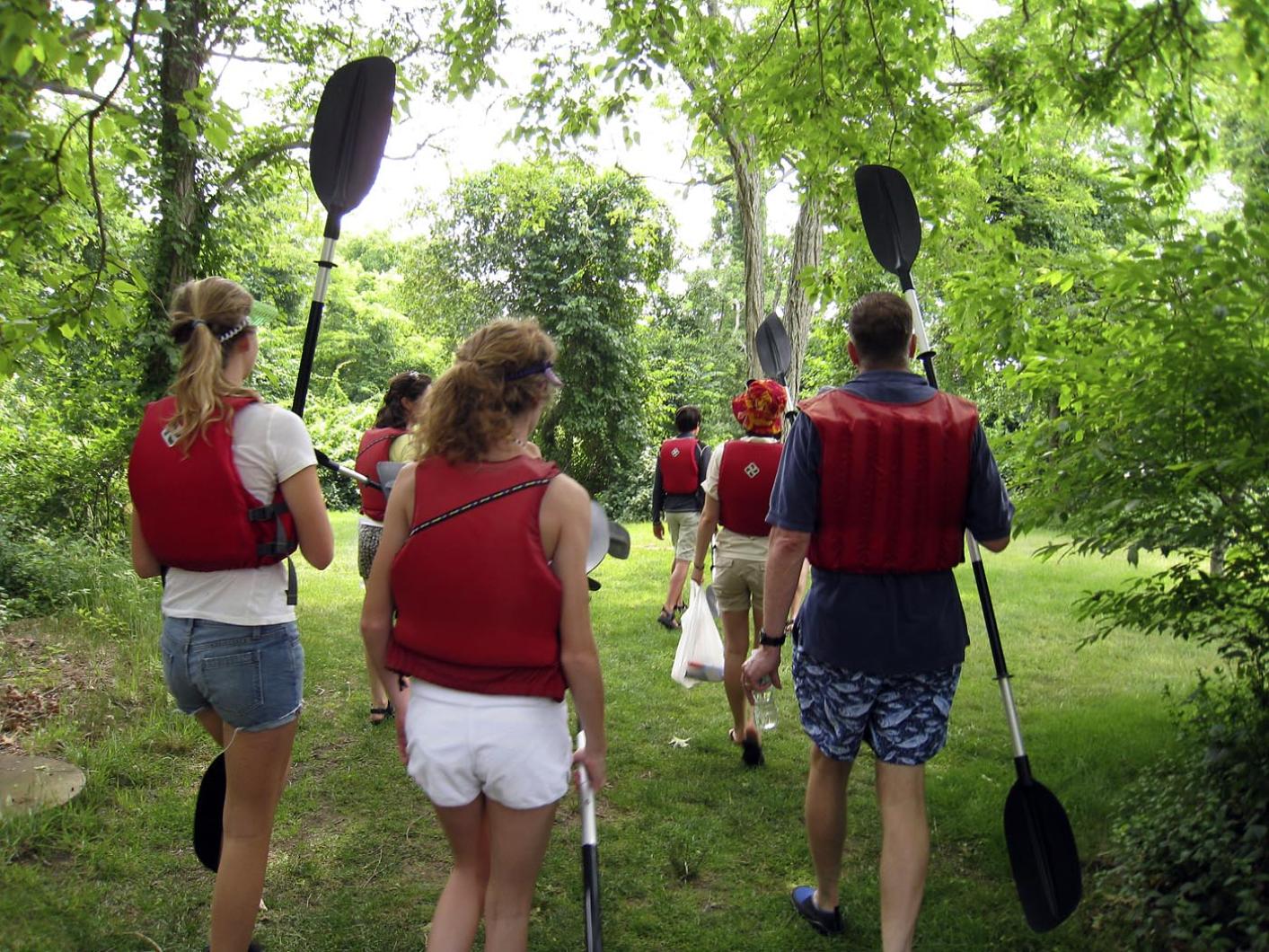Leading a tour of the Sengekontacket, Felix Neck guide Emily Smith rounded Sarsons Island Friday in her red kayak and stopped. Something in the pond had caught her eye. She backtracked, peered into the water for a few moments and then pulled out a horseshoe crab. The kayakers on the tour crowded around for a look, bumping their boats together as they packed in. She flipped the crab over to show its small legs squirming in the air and began spelling out facts about the creature.
First, horseshoe crabs have no relation to stingrays. Somewhat obvious, yes, but their pointy tail tends to throw people.
Second, they’re not going to use that tail to hurt you, just to flip themselves over when a current knocks them on their backs.
More facts about the great pond and its inhabitants followed as the tour continued, most ending with “That’s why it’s so important to protect the Sengekontacket.”
The pond faces many threats. Invasive plants such as common reed and dead man’s fingers out-compete the native species. Human activity — development, increased use, fertilizers and run-off — hurts the pond as well.
“Getting people out on the boats is really just a way to get them to connect with the pond,” said Felix Neck director Suzan Bellincampi Wednesday afternoon. “The more you know about the place, the more you care about it.”
Friday morning, Sengekontacket was beautiful. Osprey flew overhead, terns dove in the water and cormorants dried their wings on Sarsons Island. Beach Road looked like a small strand in the distance, its little cars part of a different world.
Ms. Smith picked a handful of sea pickles off the grassy shore and passed them around for people to taste. Kirkland Heidrick, a visitor from Austin, Tex., tried one and then turned to her mother in another boat.
“Why didn’t you try it?” she asked.
“I don’t like pickles,” her mother Catherine Heidrick replied.
“They didn’t taste like pickles. They tasted like salt.”
Fun fact.
Ms. Smith led the tour single file into a narrow inlet in the salt marsh, which went well until kayakers were asked to turn around and paddle out.
In the end the kayacking proved to be fairly easy — “like peddling with your hands,” Ms. Smith explained.
There’s a peaceful satisfaction in the self-propulsion. Each pull of the paddle produced a tiny lurch across the smooth water. A fun trick is to build up speed and then jab your paddle in the water, swinging you boat around like a slow-motion version of pulling the emergency break in a fast car. The reporter repeated this multiple times, spinning around and paddling backwards while pretending the soft splashes were the revving engines of a high-speed chase. This drew occasional glances from the other kayakers; a cub reporter’s mistake you can use as a what-not-to-do guide.
Felix Neck Wildlife Sanctuary offers guided kayak tours on Mondays and Fridays through Sept. 12, 10 a.m. to noon. Trips include basic instruction and boat safety; ages 11 and up with an adult. Cost is $35, or $28 for Mass Audubon members. For details or to preregister, call 508-627-4850.







Comments
Comment policy »